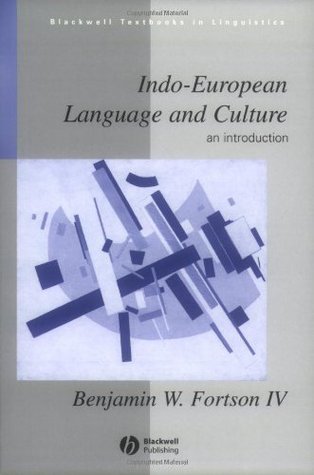What do you think?
Rate this book


488 pages, Paperback
First published January 1, 2004
Memorize the names of all the branches of the IE family, and the names and filiations of the extinct languages in figure 1.1
Based on §13.13 and your knowledge of PIE and Latin sound changes, into which of the four conjugations would the following PIE athematic verbs have fallen?
*bleh1-ti 'weeps'
*bheh2-ti 'speaks'
*neh1-ti 'sew'
Imagine that you are the proud discoverer of a hitherto unknown ancient IE language belonging to a hitherto unknown branch of the family. Your task is to report your discovery to the scholarly world. Describe your language, including at least the following information:
The date of the texts) you have found and the place of discovery;
The outcomes of all the PIE sounds — consonants, vowels, and diphthongs – in your language. Include at least two sound changes that are conditioned, ie., that happened only in particular phonetic environments (some of the conditioned sound changes that weve talked about are rhotacism in Latin, umlaut in Germanic, Verners Law, and palatalization. Be sure to specify what the phonetic environments were (beginning of a word, between vowels, before a front vowel, wordfinally, etc. etc.);
The outcomes of these PIE forms: *ph2tḗr 'father', *mātēr 'mother', *bhrātēr ‘brother, *su̯esór 'sister', *pods, *ped 'foot', *mūs- 'mouse', *kwel- 'to turn', *h3erbh- 'transfer' to another sphere of ownership', *k̂léu̯os fame, *u̯lkwos 'wolf', *̑gheimōn 'winter', *sneigwh 'snow'
A brief description of the nominal system, including: what cases are preserved; what numbers; what genders; the general fate of athematic and thematic nouns;
A brief description of the verbal system, including: what tenses are preserved; what numbers; the general fate of athematic and thematic verbs, of the aorist, and of the perfect;
The paradigm in the singular and 3rd plural of the descendant of *h1es- 'be' in the present tense, *bher- 'carries' in the present tense, and *u̯oide 'knows';
A sample text in your language of a dozen words, including at least half that have an IE etymology and are different from the ones you give in (3) above;
Some brief remarks about the culture, mythology, society, etc. of the people that spoke your language.